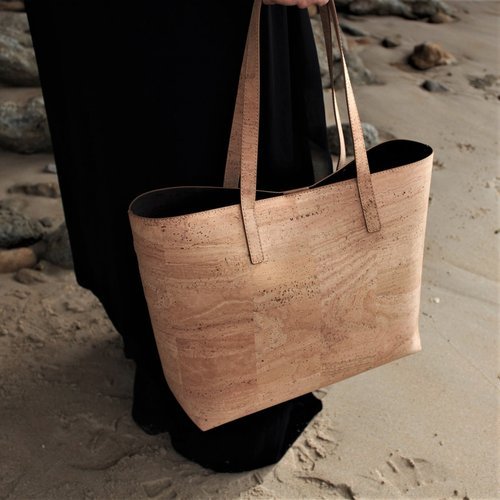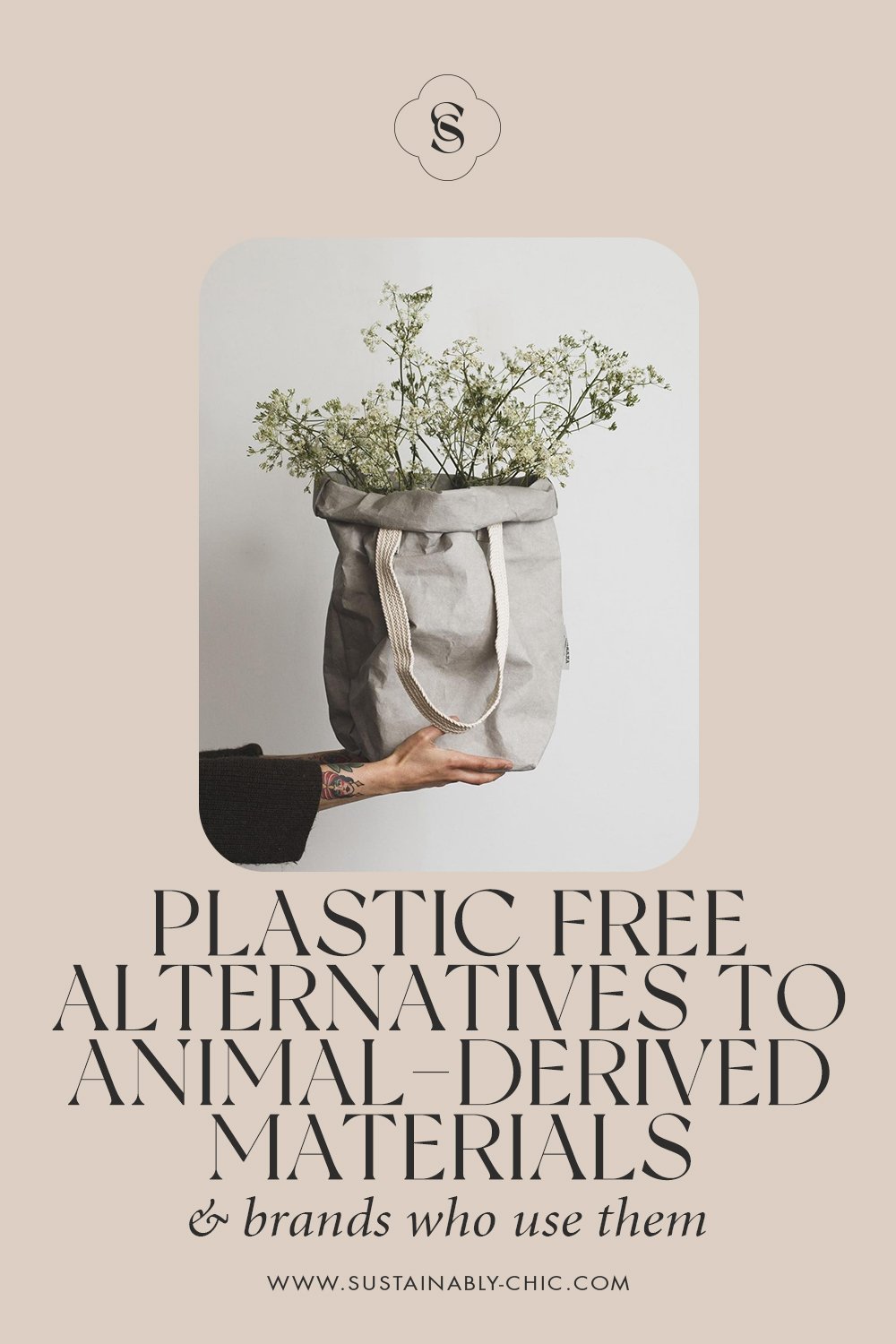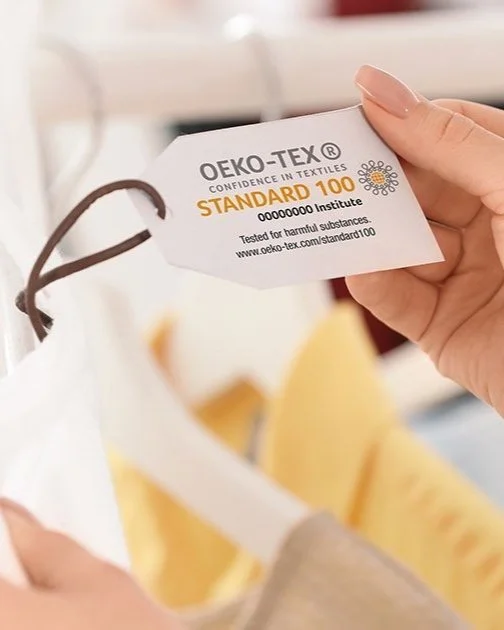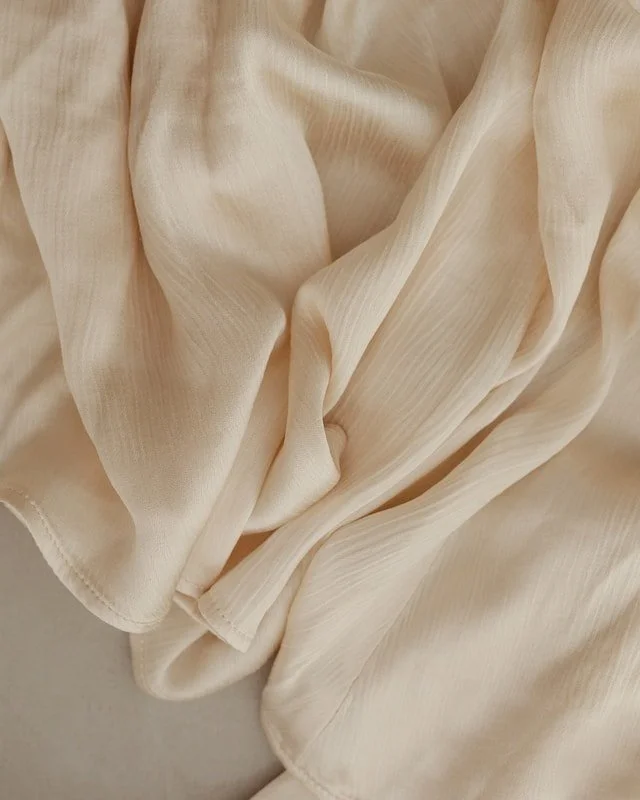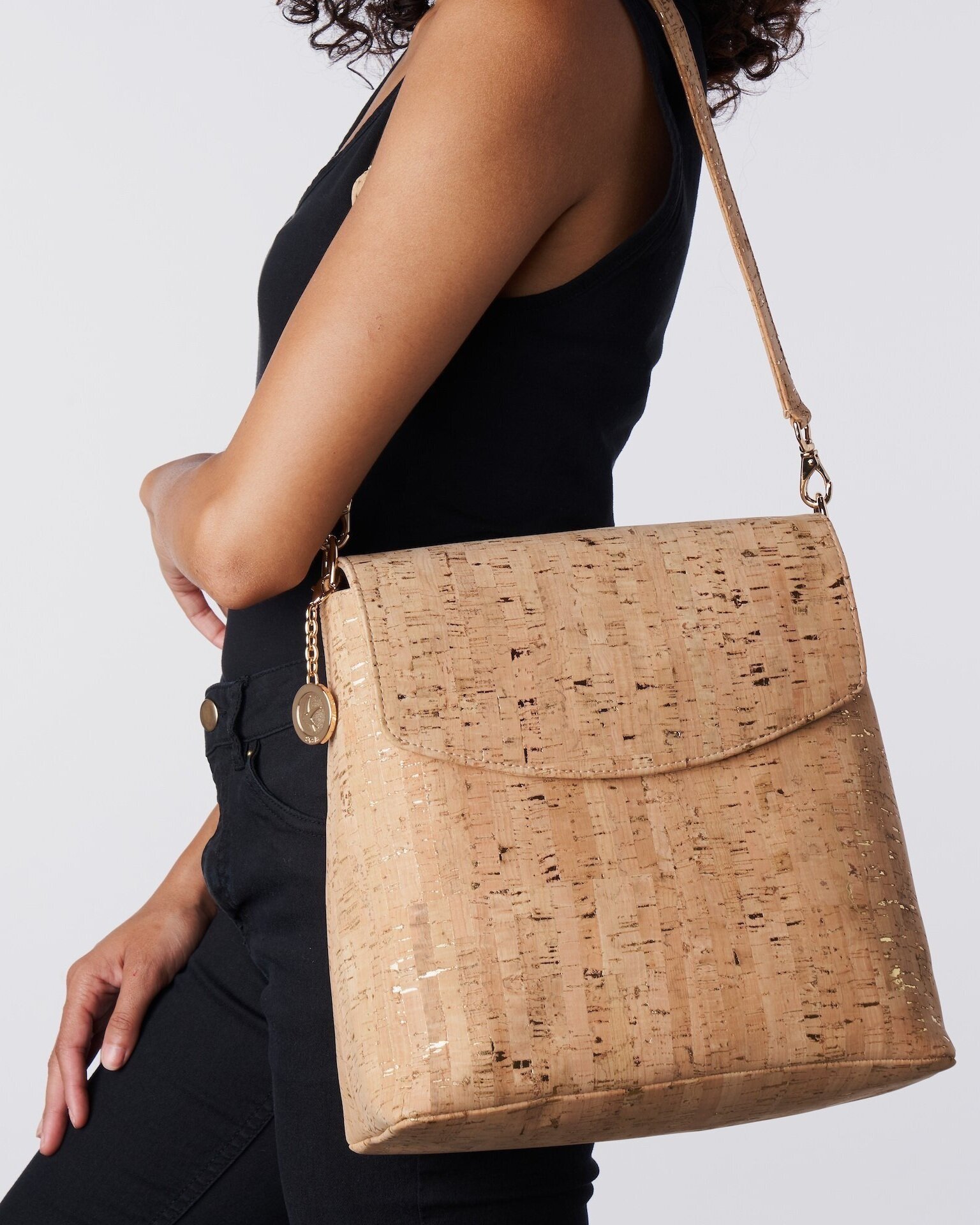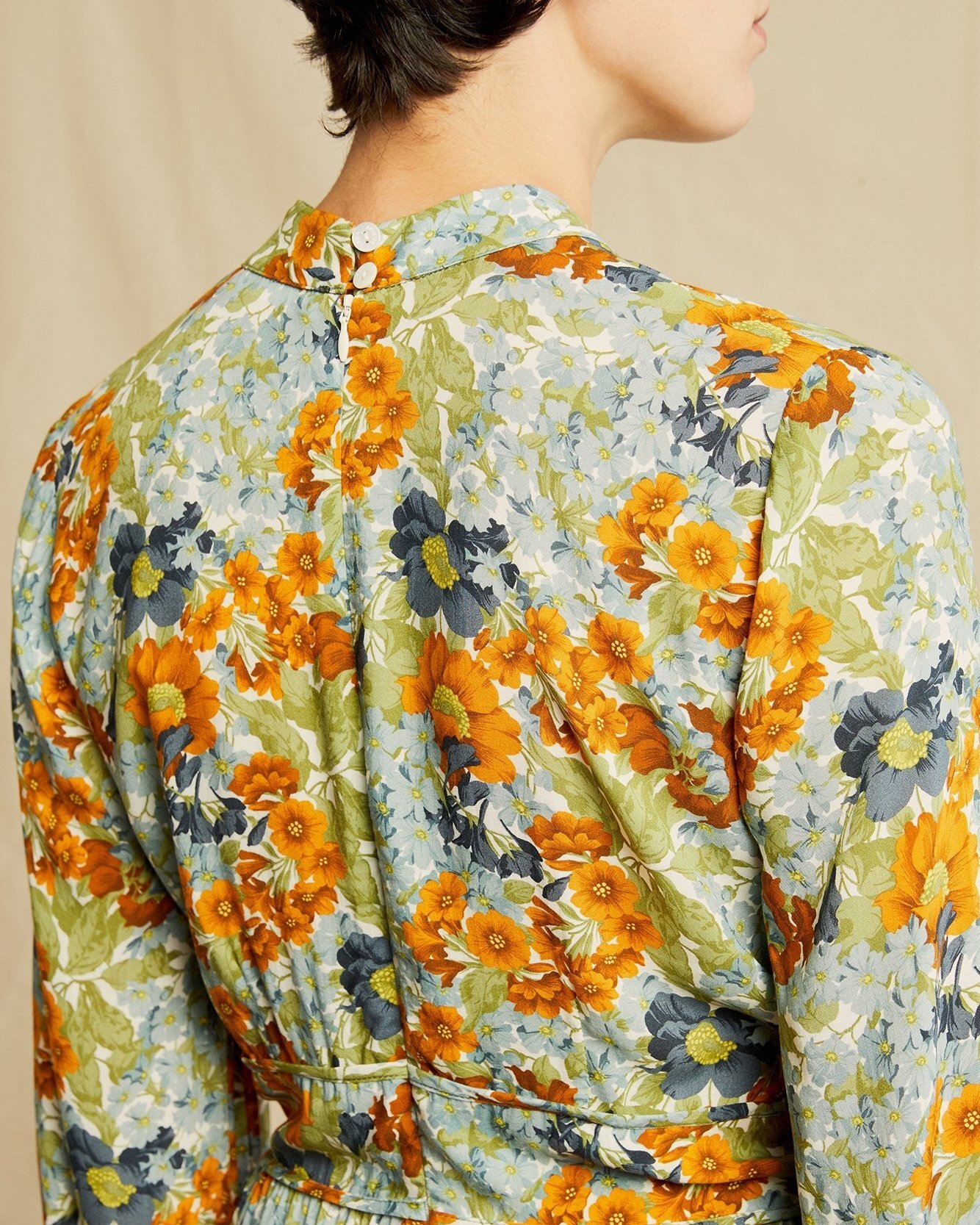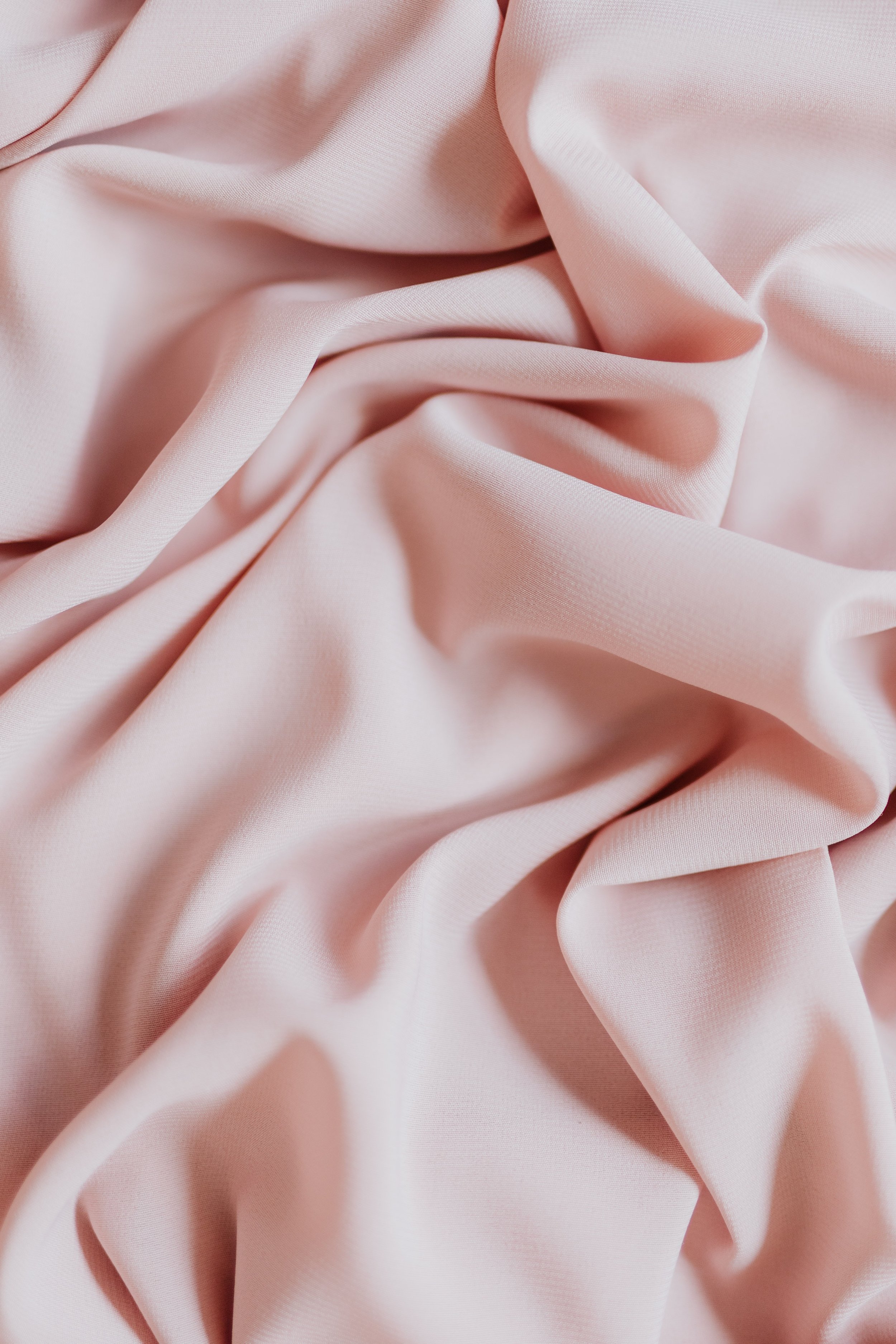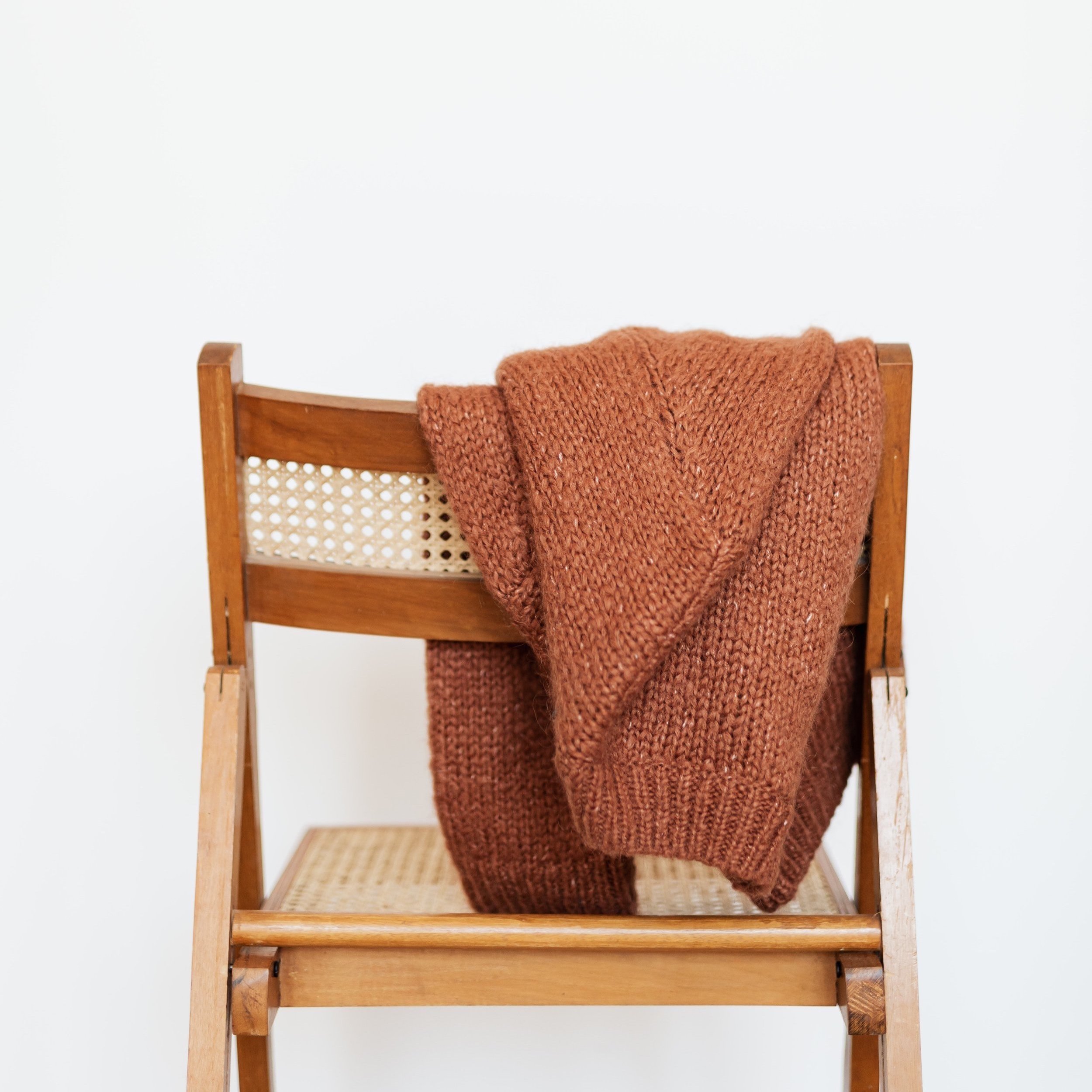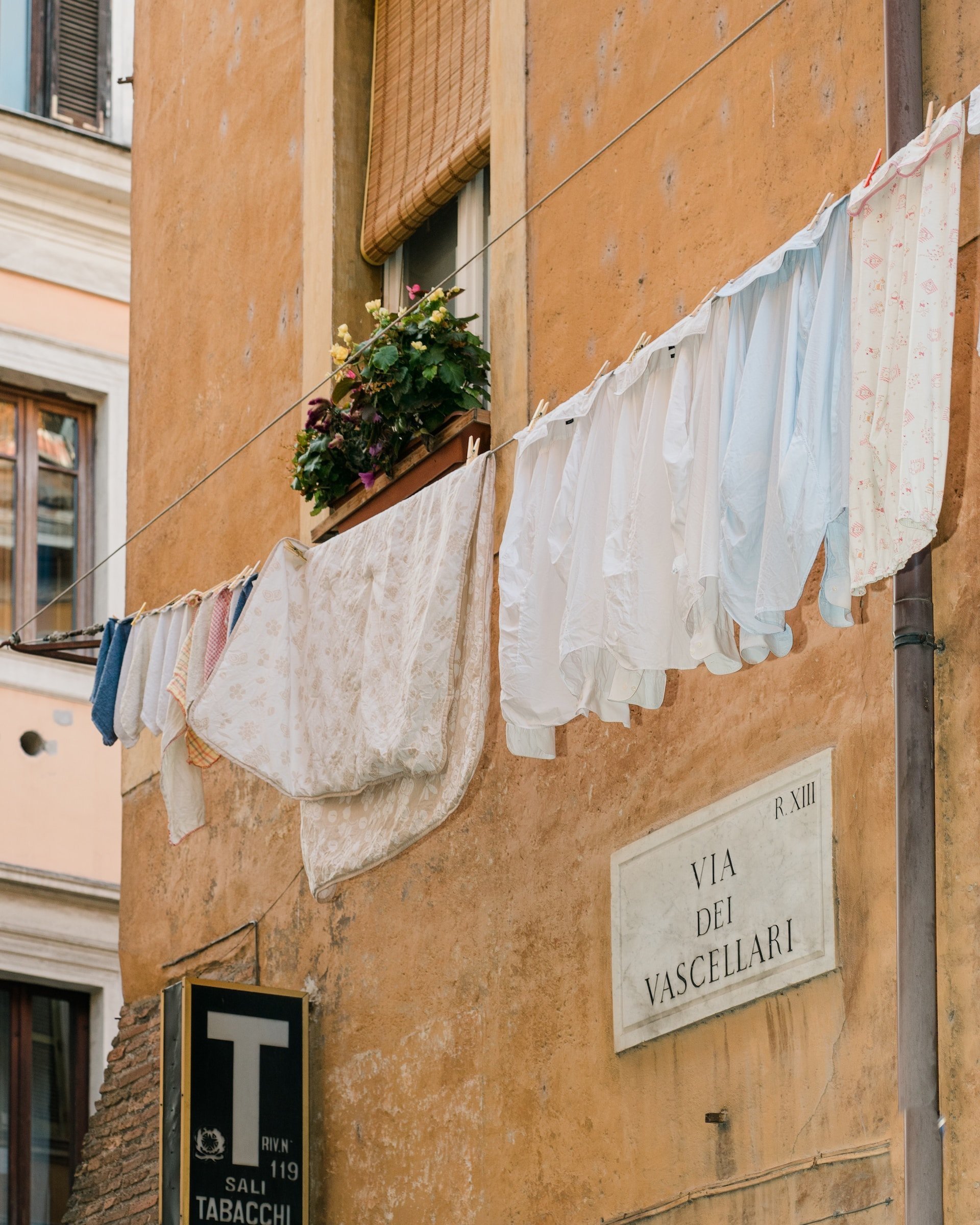Plastic Free Alternatives to Animal-Derived Materials And Brands Using Them
Image: UASHMAMA
Plastic Free Alternatives to Animal-Derived Materials
For those looking to avoid animal-derived materials for the sake of animals themselves, as well as people and the planet, it can be difficult to know what to wear instead. Switching out animal skins for plastic is no perfect solution, so fortunately there are plenty of totally animal and plastic free alternatives to fur, leather and wool.
Why do some people avoid wearing animal-derived materials like fur, leather and wool?
A growing number of people are opting to avoid all animal-derived materials in fashion – as many as one in eight globally, according to surveying by FOUR PAWS. There are plenty of reasons for this change, with the first and most obvious being for the protection of animals themselves. Whether fur, leather or wool, the industries selling these skins and fibers ultimately slaughter animals when it is most profitable. The cruelties of fur are most commonly understood, but leather – a valuable co-product of the meat industry – and wool have insidious undersides, too. From calf-cow separation and painful dehorning for leather and brutal tail docking and selective breeding practices for wool, it’s easy to understand this growing shift beyond animal-derived materials. But there are environmental reasons for this switch, too.
While we could talk for days about the environmental impacts of these materials, here are a few fast facts: Leather has one of the most significant negative climate, land, and biodiversity impacts of any material on the planet. Making cow skin leather for a pair of boots can result in as many as 7 times more emissions than even synthetic leather, which is far out-performed by genuinely sustainable alternatives, too. Meanwhile, fur contributes to major pollution through factory-farming, and is rendered toxically non-biodegradable by the chemicals pelts are processed with in order to be wearable. Wool on the other hand is highly land-inefficient, requiring as much as 1,800 square meters more land to produce an average knitted sweater than materials like cotton or Tencel. In turn, wool contributes to major biodiversity destruction and even some serious species threats.
Finally, some of the human impacts of these animal-derived material supply chains include the plight of slaughterhouse workers killing for a living, who are more likely to suffer with perpetration-induced traumatic stress (similar to PTSD) due to their inherently violent work. Too, people working in both fur-dressing and leather tanning are exposed to harmful and carcinogenic substances frequently, and even shearers have reported to be mistreated and underpaid. Meanwhile farmers across all three material production systems have spoken about the mental distress tied to the cruel aspects of their work.
Why are plastic materials not a sustainable solution either?
When looking to find alternatives to fur, leather and wool, you’ll come across a lot of synthetic materials. While synthetic alternatives actually have smaller climate impacts, this does not mean they are good for the climate or planet – they certainly are not! Acrylic faux fur and wool, polyurethane synthetic leather: these plastic materials are derived from fossil fuels. As a global community, the IPCC states that we must shift beyond the use of all fossil fuels, and yet the fashion industry makes as much as 62% of all materials from petrochemicals. This means that as many as 342 million barrels of crude oil are used each year to produce plastic textiles. This impacts our shared planet, wildlife, and people – particularly those who are poorer and who are Black and Brown, in a form of environmental racism seen across the leather supply chain too.
What’s more, non-biodegradable materials like synthetics, as well as processed fur and leather, can contribute to pollution when garments, shoes and bags are no longer in use. Every time a garment like, say, a synthetic thermal top is washed, tiny fibers come off the fabric and are released into waterways, which ultimately connect to the ocean in many cases. It’s estimated that a whopping 1.5 million trillion microfibers are present in the ocean today. While it’s important to note that even non-plastic fibers from wool to cotton can become non-biodegradable microfibers too, if harmful dyes and processing substances are used, these materials have the capacity to be biodegradable, which is an important distinction. A fossil-fuel derived plastic fiber is never going to be a solution.
Image: Murmali
Plastic-free alternatives to leather
So what animal-free and plastic-free leather alternatives exist? And what brands are using them? Here are a few great options:
MIRUM
MIRUM is probably the most exciting leather alternative available today. Made by Natural Fiber Welding (NFW), the material is certified to be made wholly from bio-based content. Able to be customized for different brands based on how thick, textured, colored or flexible they want their material to be, MIRUM can be made from a variety of different materials. These include natural rubber (certified to be sourced responsibly), clays, plant-based oils and waxes, coconut husk fiber, cork powder sourced as a by-product from wine-stopper making, rice hulls, and more. Zero animal inputs and zero plastic make it better for the planet, and able to both compost and be recycled. If you’re looking for products made from MIRUM, it’s worth following NFW, as they share announcements on new brands regularly. Brave GentleMan offers some ethically made accessories and shoes from the material, while Melina Bucher offers a fairly produced handbag, and B-Corp Bellroy sells a simple wallet and other small goods.
Washable paper
While ‘paper’ probably makes you think of something thin, flimsy and easy to rip, washable paper is a different story. Durable, splash and tear resistant, washable paper sourced from certified responsible wood sources (look for the Forest Stewardship certification) can make for great bags and accessories. Treekind is a similar kind of material, made by a start-up which only uses fallen wood and leaves, as well as wasted Christmas trees to make their strong, sturdy and ultimately compostable material – just like washable paper. Want to get your hands on a woody alternative to animal and synthetic leather? UASHMAMA is a Tuscany based made-to-order label offering handbags, accessories and carry bags made from washable paper, offered in a variety of colourways and textures. Watch out for the small animal leather details on some products, though. Etsy is also full of small, local makers who use the material.
Cork
Another tree-based and compostable option, cork bark can be stripped from trunks without harming the tree. In fact, stripping cork bark can help trees sequester more carbon. To ensure total biodegradation, make sure to pick cork fabrics that are backed onto cotton, not a synthetic material. Able to be embossed to mimic all kinds of textures (think crocodile skin alternative!)cork leather alternatives are available at a wide range of Portuguese brands, as this is where many cork trees grow. For luxury-end cork fashion look to Parisian brand Laflore, which combines cork with gorgeous hardware detailing for versatile travel bags, and easy-access every day handbags. Murmali uses high quality cork for their tote bags, cark holders, and over the shoulder bags. Meanwhile, Jord offers cork backpacks, petite crossbody bags and other accessories in both feminine and masculine styles.
Plastic-free alternatives to wool
In the case of wool, there are a number of great plant-based, recycled and innovative alternatives that can be made into knitwear, base layers and other winter warmers – without plastic.
Tencel
A cellulosic material produced in a closed-loop, non-polluting system, Tencel is also made from sustainably sourced wood. Tencel is thermo-regulating and moisture-wicking, meaning it helps to keep you both warm and cool as you need – just like wool does. In fact, laboratory research has shown Tencel to have similar water vapor absorption capacities as wool, while drying three times faster. It’s also antimicrobial. Because of these factors, silky smooth Tencel is a comfortable thermal layer, and can also be knitted into sweaters. Tencel winter warmers can be found at Organic Basics, where you can find turtlenecks and base layers, as well as at Armed Angel. This German label offers cardigans, sweatsuits and other cozy goods in Tencel – just make sure you avoid their wool-blend options. Feeling crafty? Wool and the Gang have a selection of 100% Tencel yarns you can buy alongside knitting patterns!
Hemp
Hemp is a hardy, thermo-regulating and sustainable material that can grow large on a small amount of land. Often blended with other materials to be made into knitted fabrics and yarns, hemp can also be made into tweed. Opera Campi creates 100% hemp knitwear to order in Italy, using their own technology which makes hemp softer than usual. Though there are some wool blends to watch out for, this brand is leading the way for hemp knitwear. Another innovator, Australian brand Afends (use code SUSTAINABLYCHIC15 for 15% off full-priced items) has their own hemp farm which they make knitted pants, skirts, hoodies and ribbed long sleeves from.
Sustainably sourced cotton
Cotton can be sourced sustainably in a number of ways: when it’s recycled, organic, rain-fed, grown with more holistic management practices, and with fair trade labor. Cotton can be made into thick and chunky knits, with this thickness helping with warmth. The Knotty Ones uses fair trade cotton for their collection of beautiful knits, Willow and Claude knitwear and scarves are made from 100% Australian, transparent and responsibly sourced cotton, and People Tree offer a range of certified organic and fair trade cotton cardigans and other knits.
Plastic-free alternatives to fur
Fur is the animal-derived material most widely recognised as unacceptable, and it’s easy to avoid. If you are looking for fur alternatives, let’s talk about the available options.
Denim as a fur alternative
Ukrainian brand Ksenia Schnaider created ‘faux fur’ from vintage denim which they shred and remake into a fluffy, furry and beautiful material. This sort of innovation shows how limitless the possibilities are when it comes to sustainable, animal- and plastic-free materials, if we’re willing to think creatively, and support the brands doing the same.
Virgin plastic-free recycled faux fur
While ECOPEL has recently released GACHA, a biodegradable faux fur, it’s still very difficult to find such materials in brands. Until that changes, while it’s hard to find virgin plastic-free faux fur, there are faux furs made from 100% recycled synthetic sources – including from ocean-diverted plastics. Brands using these materials include London-based Jakke – which offers the best range of colorful, playful coats and jackets – as well as Ena Pelly, which offers sleek, elegant fur alternative designs.
Pre-loved faux fur
Of course, shopping pre-loved is always the most sustainable option, and there are plenty of vintage and pre-loved faux fur coats out there. These kinds of coats and jackets aren’t machine washed, helping to eliminate the microfiber waste problem. Making use of what’s already here on our finite planet is a great way to reduce your impact on the Earth and those we share it with.
About the Author
Emma Håkansson is the founder and director of Collective Fashion Justice which seeks to create a total ethics fashion system that prioritizes the life and wellbeing of non-human & human animals, as well as the planet, before profit & production. She has written countless articles on ethics, sustainability, and fashion, and has two books due out over the next two years.
MAKE SURE TO PIN THE PHOTO BELOW TO SAVE THIS POST FOR LATER!
WANT MORE SUSTAINABLE BRANDS? VISIT OUR BRAND DIRECTORY!
Our Brand Directory is home to hundreds of sustainable brands, from makeup to cleaning supplies, from underwear to shoes. We have broken everything down by category for easy shopping, along with discount codes unique to Sustainably Chic viewers.


